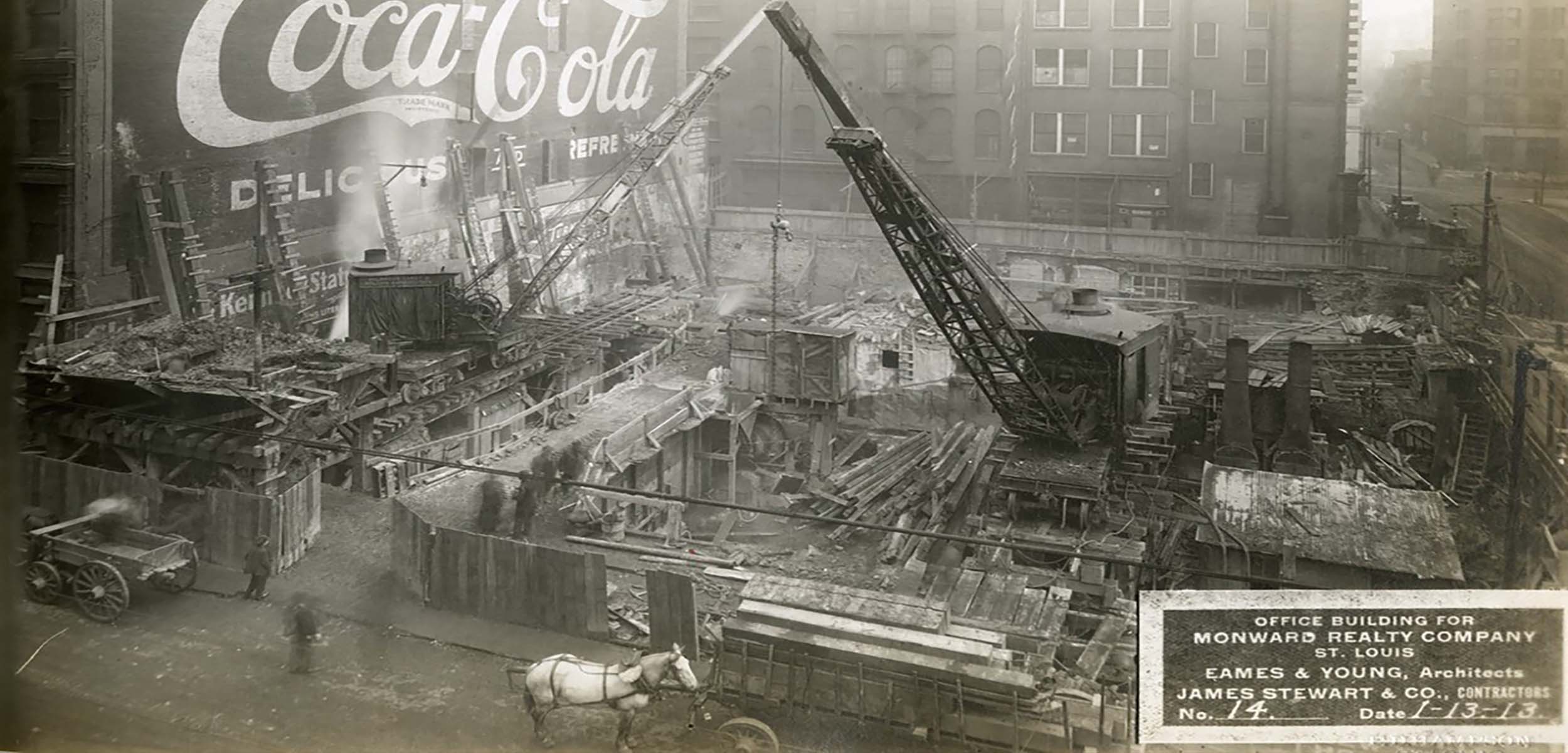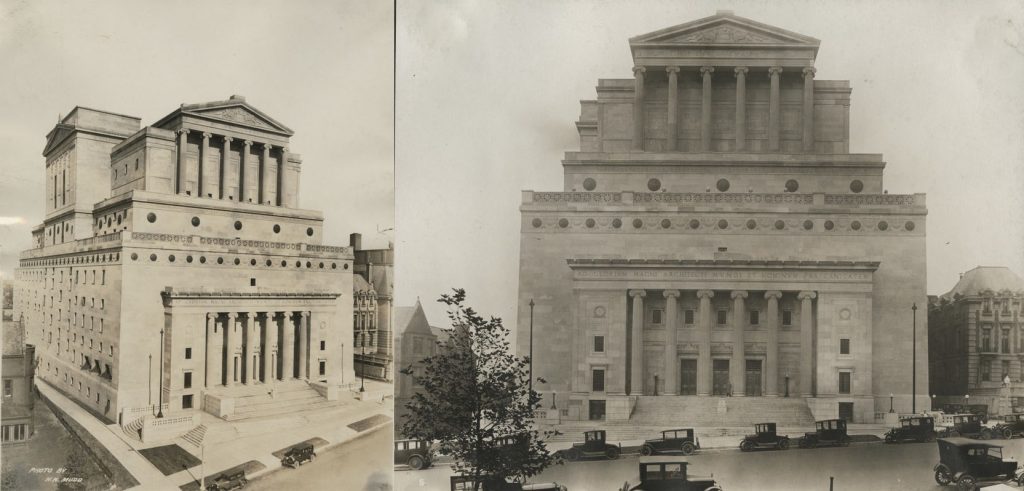Eames & Young Architectural Photographs

The Eames & Young Digital Collection holds over 200 images that reside in WashU’s Kenneth and Nancy Kranzberg Art & Architecture Library.
William S. Eames and Thomas C. Young were partners in an architectural firm. WashU owns eight albums that contain unique photographs of the firm’s buildings under various stages of construction.
In addition to the photo albums, the WashU Libraries also owns the Eames & Young reference library and the Eames & Young Digital Collection, which holds over 200 images. Most of the titles reside in the Kranzberg Art & Architecture Library, some in Art Special Collections, and some at West Campus.
These 99 books are historical works on a broad range of architectural topics such as Renaissance architecture, French or Italian architecture, garden design, etc. Please consult the Library Catalog for a full listing of these reference materials.

About the Eames & Young Firm
William S. Eames was born in Clinton, Michigan, in 1857. He and his family moved to St. Louis in 1863, where he graduated from the St. Louis School of Fine Arts in 1878. After an extensive study trip around Europe, Eames received an appointment as the Deputy Commissioner of Public Buildings. He completed plans for several structures in the city, then resigned in 1885 to form a partnership with Thomas C. Young.
Young was born in 1858 and primarily lived in Grand Rapids, Michigan, until coming to WashU in 1878. In 1880 he traveled to Europe to study at l’Ecole des Beaux-Arts in Paris and Heidelberg University in Germany. Upon returning to the United States, Young worked with the Boston firm of Van Brunt & Howe and E.M. Wheelwright from 1882-1885. He returned to St. Louis to work on the commission of a small office building, a project supervised by Eames. This project led to their partnership.
After a series of impressive residential commissions, the firm undertook commissions for larger structures such as the Cupples Warehouse complex, the Lincoln Trust Building, the Art Building for the Trans-Continental Exposition in Omaha, and federal prisons in Atlanta, Georgia, and Leavenworth, Kansas.
Eames became the first president of the St. Louis Chapter of the American Institute of Architects and, in 1904, the first St. Louisan to hold the office of National President of the Institute. Meanwhile, Young served as mayor of Webster Groves and eventually overtook Eames’ position as the president of the St. Louis Chapter of the AIA in 1909 and 1910.
Eames died in 1915. Having never married, Eames was survived by his mother, five sisters, and one brother, the father of architect-designer Charles Eames. After Eames’ death, Young continued to practice and eventually formed an office in Chicago with Alfred H. Granger in 1917.
About the Collection
The Eames and Young digitization project was proposed based on requests for eight of the thirteen photo albums in Art Special Collections. The first eight albums contain unique photos of the firm’s buildings.
The images in volumes 1-8 are black and white photographs, a total of 254 in two formats. Volumes 1-4 are commercially bound; each photo page is backed with cloth, and the photos measure 26.6 x 21.2 cm. Volumes 5-8 are leather albums, crumbling from either their acidic board backing or red-rot. The images in these albums are mounted on acidic black paper, which was common in the 1920s. Some photos show signs of fading and discoloration. The photos vary slightly, with none measuring more than 28 x 22.8 cm.
The partners in the firm were William S. Eames & Thomas C. Young. William, the uncle to Charles of the Charles & Ray Eames design team, died in 1915. Thomas Young continued working until 1927 when he retired from practice.
About the Eames & Young Digitization Project
The Digital Library Team met in several working groups to recommend a content management system, scanning resolution, intellectual property rights, metadata fields, and scanning workflow.
The scanning resolution for these photographs is 600ppi (dpi). This resolution was determined after reviewing the recommendations of several other organizations, including the Library of Congress, the National Archives and Records Administration, and the Universities of Virginia, Michigan, Indiana, and California.
Metadata fields were determined based on a review of Dublin Core and the University of Kansas template for art and cultural objects. An attempt was made to create fields usable by art and architectural objects.
Access these Materails
Browse images from the Eames & Young Architectural Photography Collection on JSTOR
The Kranzberg Art & Architecture Library staff may be reached at (314) 935-5268 or artarch@wumail.wustl.edu
Contact
- Department
- Collections, Access, and Scholarly Communications
- Name
- Special Collections Department
- Job Title
- Email Address
- spec@wumail.wustl.edu
- Phone Number
- (314) 935-5495
